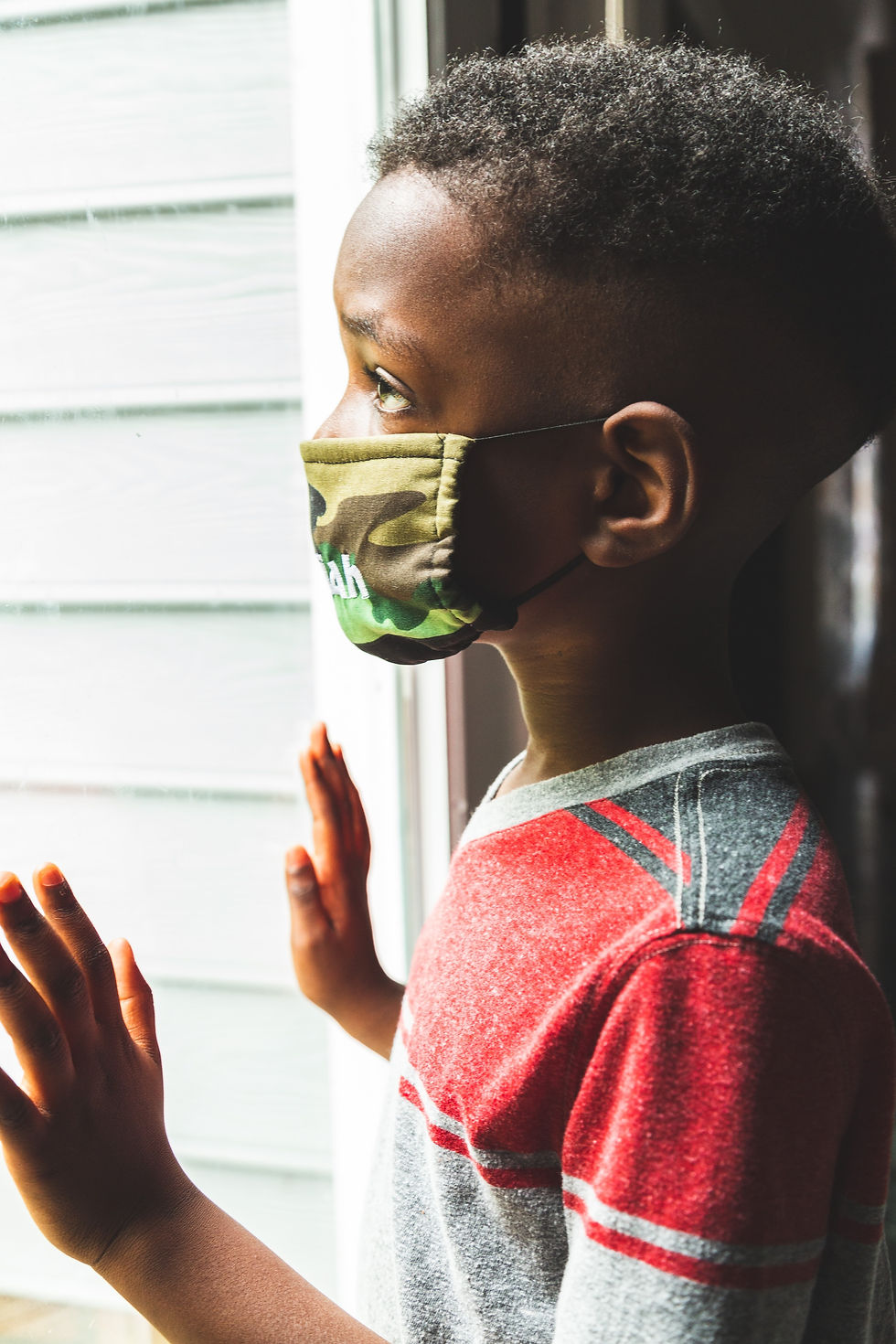The COVID-19 pandemic has completely changed the everyday structure of life nationwide and around the world. Schools and jobs have gone completely remote, the nationwide unemployment levels are at an all-time high, friends and loved ones have been personally affected by the virus, and there are so many uncertainties and stress as a result.

Many of us have not seen anything like this pandemic in our lifetime. While dealing with the stressors, anxieties, and effects of the pandemic is a struggle for adults, the mental health and wellness of children is just as important to consider during these times.
Talking with your children about a global pandemic is surely not something most parents have been prepared for, but it is important to have conversations with your children to ease their anxieties.
Children may worry about themselves, their family, and friends getting ill with COVID-19. Parents, family members, school staff, and other trusted adults can play an important role in helping children make sense of what they hear in a way that is honest, accurate, and minimizes anxiety or fear.
The CDC recommends the tips below for talking with your children about COVID-19:
Remain calm. Remember that children will react to both what you say and how you say it. They will pick up cues from the conversations you have with them and with others.
Reassure children that they are safe. Let them know it is okay if they feel upset. Share with them how you deal with your own stress so that they can learn how to cope from you.
Make yourself available to listen and to talk. Let children know they can come to you when they have questions.
Avoid language that might blame others and lead to stigma.
Pay attention to what children see or hear on television, radio, or online. Consider reducing the amount of screen time focused on COVID-19. Too much information on one topic can lead to anxiety.
Provide information that is truthful and appropriate for the age and developmental level of the child. Talk to children about how some stories on COVID-19 on the Internet and social media may be based on rumors and inaccurate information. Children may misinterpret what they hear and can be frightened about something they do not understand.
Teach children everyday actions to reduce the spread of germs. Remind children to wash their hands frequently and stay away from people who are coughing or sneezing or sick. Also, remind them to cough or sneeze into a tissue or their elbow, then throw the tissue into the trash.
If school is open, discuss any new actions that may be taken at school to help protect children and school staff.

Facts about COVID-19 to discuss with children
Try to keep information simple and remind them that health are working hard to keep everyone safe and healthy.
What is COVID-19?
COVID-19 is the short name for “coronavirus disease 2019.” It is a new virus. Scientists and doctors are still learning about it.
Recently, this virus has made a lot of people sick. Scientists and doctors are trying to learn more so they can help people who get sick.
Doctors and health experts are working hard to help people stay healthy.
What can I do so that I don’t get COVID-19?
You can practice healthy habits at home, school, and play to help protect against the spread of COVID-19.
What happens if you get sick with COVID-19?
COVID-19 can look different in different people. For many people, being sick with COVID-19 would be a little bit like having the flu. People can get a fever, cough, or have a hard time taking deep breaths. Most people who have gotten COVID-19 have not gotten very sick. Only a small group of people who get it have had more serious problems.
If you do get sick, it doesn’t mean you have COVID-19. People can get sick from all kinds of germs. What’s important to remember is that if you do get sick, the adults at home will help get you any help that you need.
(From CDC WEBSITE)





